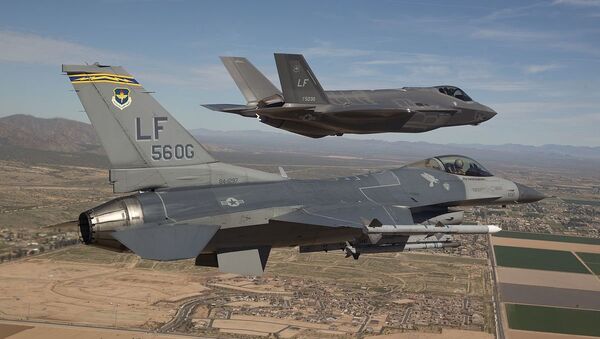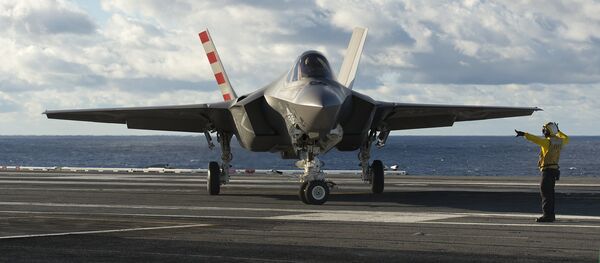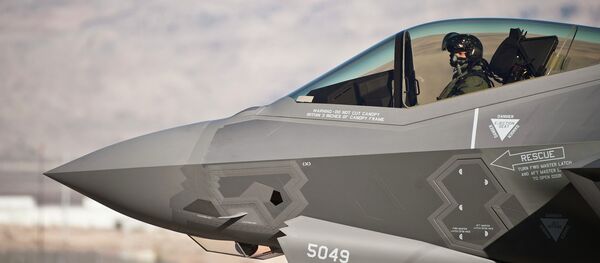Pilots weighing less than 136 pounds (about 62 kilograms) have long faced an "elevated level of risk" of a potentially lethal neck injury in the single-seat fifth generation jet. Now, lighter helmets and other modifications have solved those problems, the Air Force reports.
Previous iterations of the pilot’s helmet were too heavy, Sputnik reported. On Monday, flight restrictions for lighter pilots were removed, the Secretary of the US Air Force Public Affairs office said in an announcement.
The total helmet weight has "finally" decreased, USAF added. Other modifications include a head support gadget in the back of the helmet to mitigate the possibility of the pilot’s head whipping backward while bailing out of the plane, the statement said. Reconfiguring how the parachute was deployed to lower "parachute opening forces" also played into the new solution.
Air Force F-35 program leader Brig. Gen. Scott Pleus "personally briefed every single F-35 pilot" wearing a USAF uniform, he said.
"I’ve flown in this seat myself and believe, with these modifications, this is the safest ejection seat I’ve ever flown," Pleus noted.
Engineers removed the helmet’s external visor, which included a clear lens and a sun lens, to cut its weight from 5.1 to 4.6 pounds, the former F-16 Fighting Falcon pilot said.
Martin-Baker, the contractor tasked with designing and delivering the ejection seat, was found last year to be in violation of DoD requirements that were stipulated in the original contract. "The requirement is for the seat to be certified for any pilot weighing between 103 and 245 pounds," the Air Force said this week. More pilots will now join Air Force ranks as F-35A trained pilots as a result, but it’s not clear how many more pilots will fly the jets in addition to the 400 current F-35A pilots.
The new class of pilots will start training in the F-35s by the end of the year, Pleus told Military.com.
All costs of the new equipment changes will be incurred by the contractors, who agreed to build a flightworthy jet for pilots between 103 and 245 pounds, Joe DellaVedova, F-35 Joint Program Office spokesman, told Military.com.




